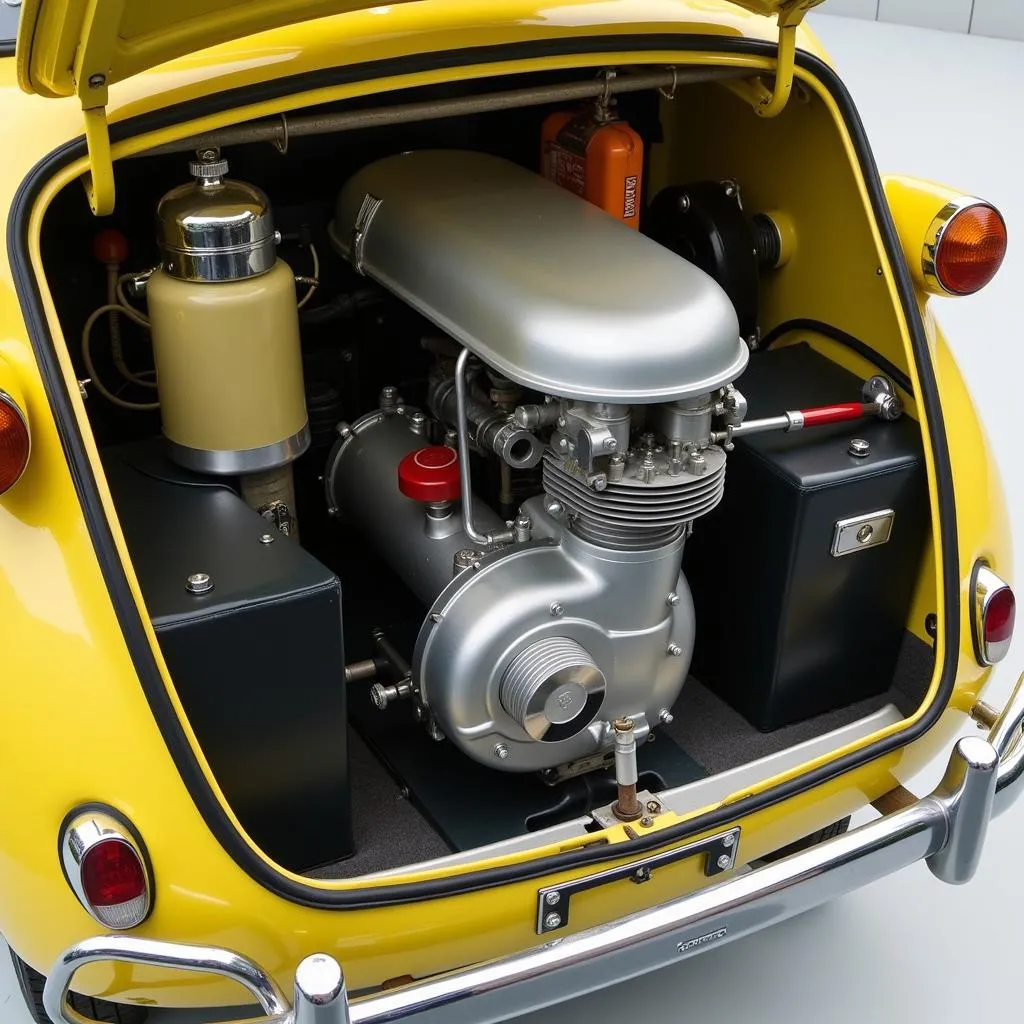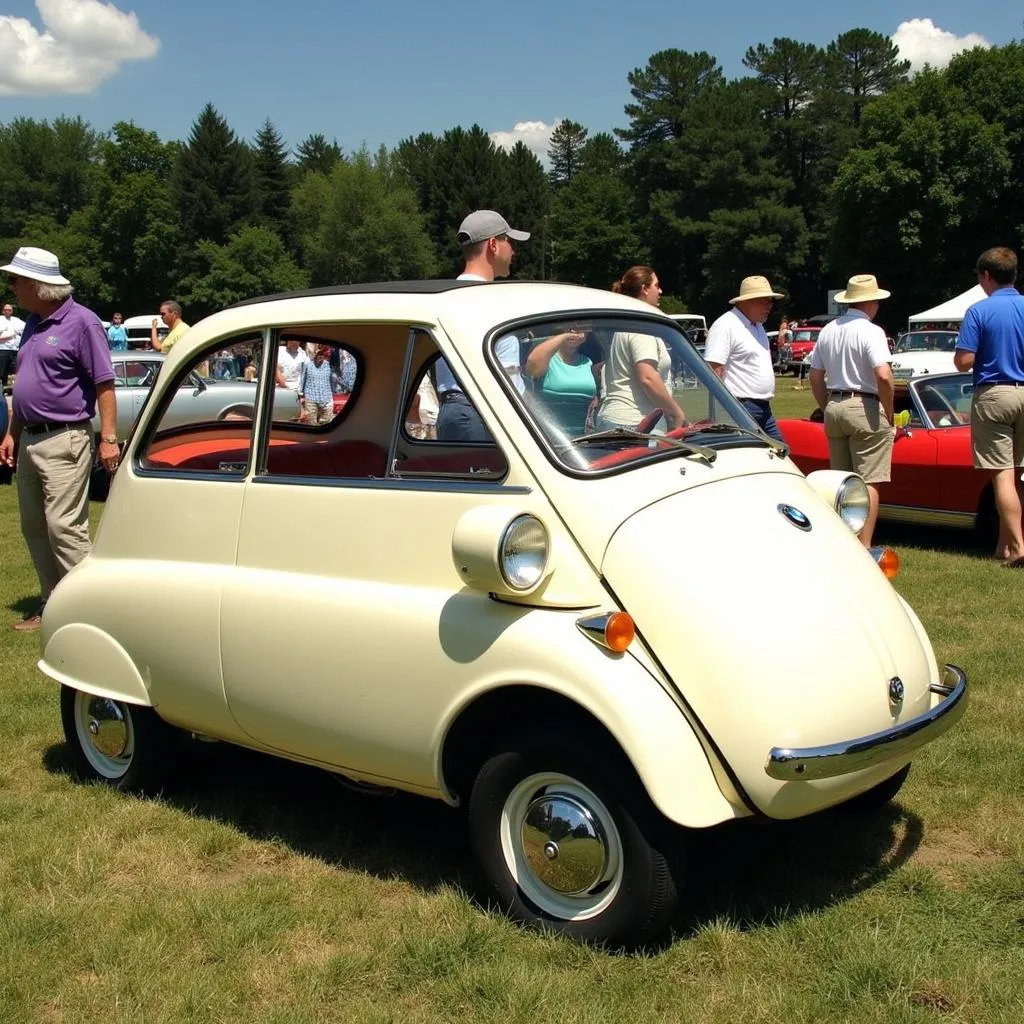Decoding the BMW Egg Shape: A Look at the Iconic Isetta
The “Bmw Egg Shape” is more than just a quirky design; it represents a pivotal moment in automotive history. This distinctive form belongs to the iconic BMW Isetta, a microcar that captured hearts and redefined urban mobility in the post-war era.
 BMW Isetta Driving on a Scenic Road
BMW Isetta Driving on a Scenic Road
The Birth of an Icon: Why the Egg Shape?
The year was 1955. World War II had recently ended, leaving Europe in dire need of affordable transportation. Enter the Iso Isetta, an Italian-designed microcar that resembled, well, an egg. BMW, struggling to regain its footing in the automotive world, saw potential in the Isetta’s unconventional design. The company acquired the licensing rights and began production of the BMW Isetta in Germany.
But why the egg shape? This unique design wasn’t just for aesthetics. The Isetta’s rounded form maximized interior space within a tiny footprint, making it incredibly fuel-efficient and maneuverable in congested European cities.
More Than Meets the Eye: Isetta’s Ingenious Design
While its egg shape is its most striking feature, the Isetta had other innovative design elements:
- Front-Opening Door: Instead of conventional side doors, the entire front end of the car hinged open, allowing for easy entry and exit.
- Bubble Windows: The panoramic windshield and large side windows offered excellent visibility, further adding to the sense of spaciousness inside the tiny cabin.
- Motorcycle Engine: Powered by a single-cylinder motorcycle engine, the Isetta was surprisingly peppy for its size.
 BMW Isetta Engine Bay
BMW Isetta Engine Bay
The Isetta’s Impact: A Symbol of Hope and Innovation
The BMW Isetta was an instant success, quickly becoming a symbol of hope and optimism during a time of rebuilding. It offered affordable mobility to the masses and helped put BMW back on the map as a leading car manufacturer.
“The Isetta was more than just a car,” says automotive historian Dr. Greta Schmidt. “It represented a new era of possibility. It proved that innovation could come in the smallest packages, and it brought joy to people who desperately needed it.”
The Legacy Lives On: The Egg Shape’s Enduring Appeal
While the production of the Isetta ceased in 1962, its legacy lives on. Today, the BMW Isetta is a highly sought-after collector’s item, its egg shape still turning heads and sparking conversations.
The Isetta’s story is a testament to the power of innovative design and its ability to capture the hearts and imaginations of generations. It serves as a reminder that sometimes, the most unconventional ideas can lead to the most enduring impact.
FAQs About the BMW Egg Shape
Q: What is the official name of the BMW egg-shaped car?
A: The official name is the BMW Isetta.
Q: When was the BMW Isetta produced?
A: BMW produced the Isetta from 1955 to 1962.
Q: Why did BMW choose the egg shape for the Isetta?
A: The egg shape maximized interior space within a small footprint, making the car fuel-efficient and easy to maneuver in cities.
Q: What type of engine did the BMW Isetta have?
A: The Isetta was powered by a single-cylinder motorcycle engine.
Q: Is the BMW Isetta still in production?
A: No, production of the Isetta ceased in 1962.
 BMW Isetta at a Classic Car Show
BMW Isetta at a Classic Car Show
Need Assistance with Your BMW?
For all your BMW repair and maintenance needs, contact our expert team at Car Diag Xpert. We specialize in European car diagnostics and repair, including classic models like the Isetta. Reach us via WhatsApp: +1(641)206-8880, Email: [email protected], or visit our workshop at 276 Reock St, City of Orange, NJ 07050, United States. Our dedicated team is available 24/7 to assist you.
Explore our website for more insightful articles on BMW models, including the BMW Isetta 600, the larger variant of this iconic microcar.
